Visualizing cycles in row-major transposition encodings (#239)
A matrix of discretely representable entries
may be linearly layed out in memory using row-major order, concatenating successive rows into a contiguous
-bytes long array. Such a representation, however, is disruptive to the matrix’ two-dimensional nature: whilst horizontally neighboring elements remain neighbors, vertically neighboring entries are torn apart by insertion of
non-neighboring elements. As such, on matrices naturally defined operations get distorted by this encoding.
One such inherently two-dimensional operation is matrix transposition. In the realm of matrices, are for nonsquare dimensions semantically different, being mapped to one another by transposition. Projecting onto their encoding, this semantic is lost and one is left with a permutation on memory
.
To visualize this permutation, its cycle decomposition is computed of which each cycle is given a color of the rainbow dyeing this cycle’s corresponding two-dimensional pixels when interpreting its path on the underlying array in the semantics of the original matrix.
Initial transposition cycles



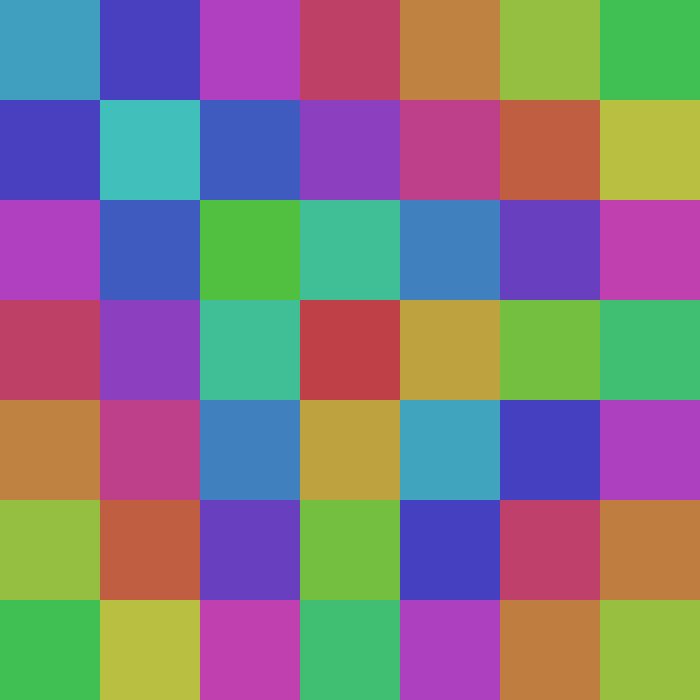
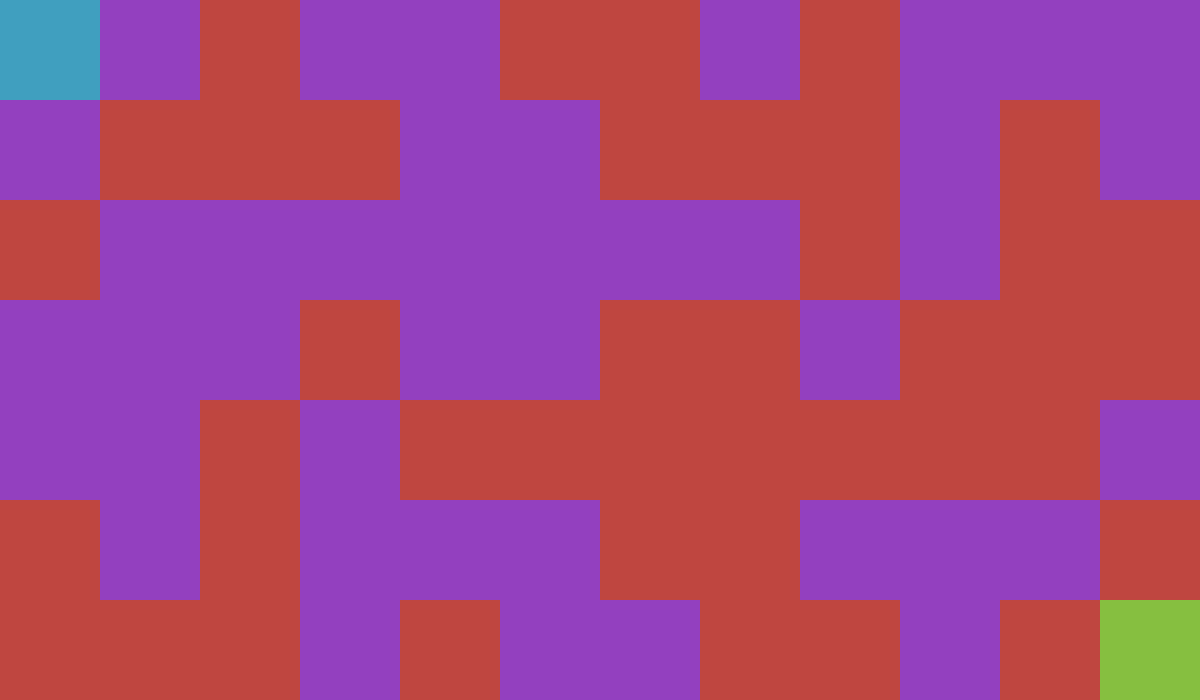







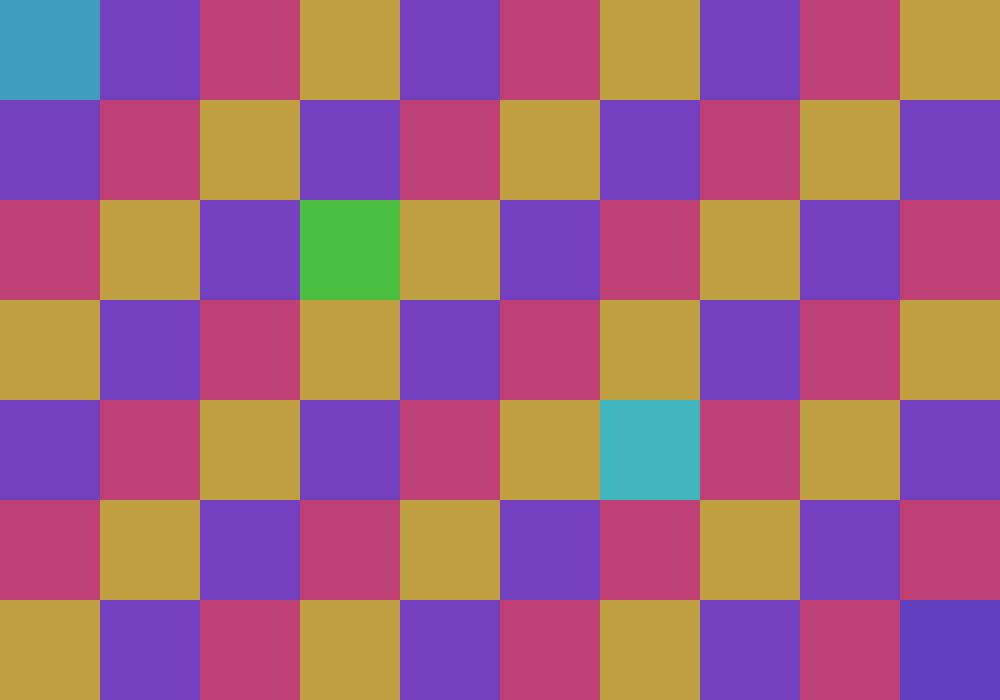


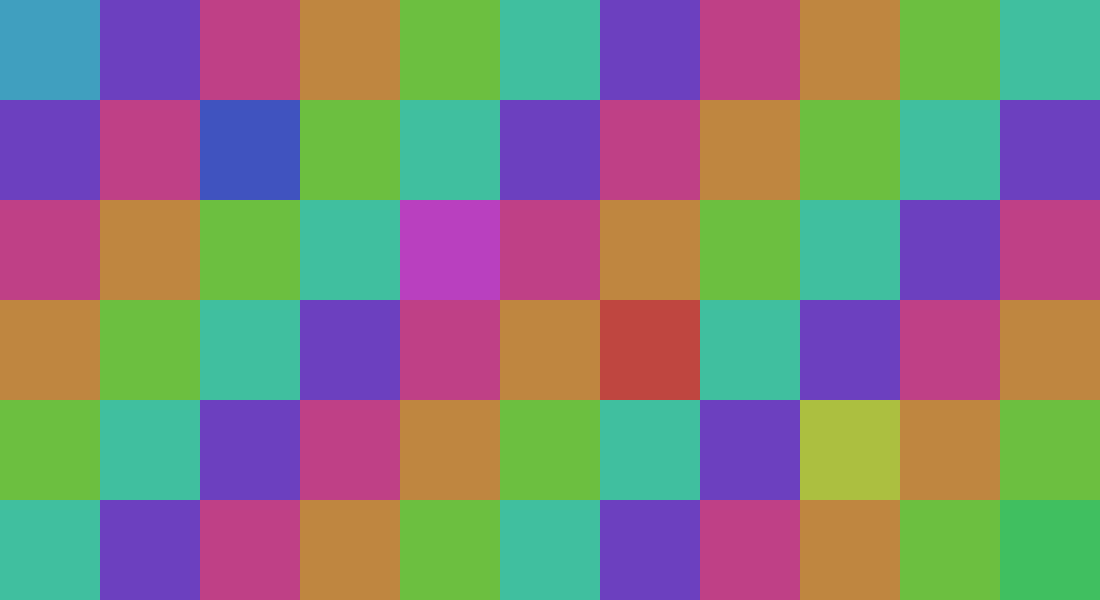
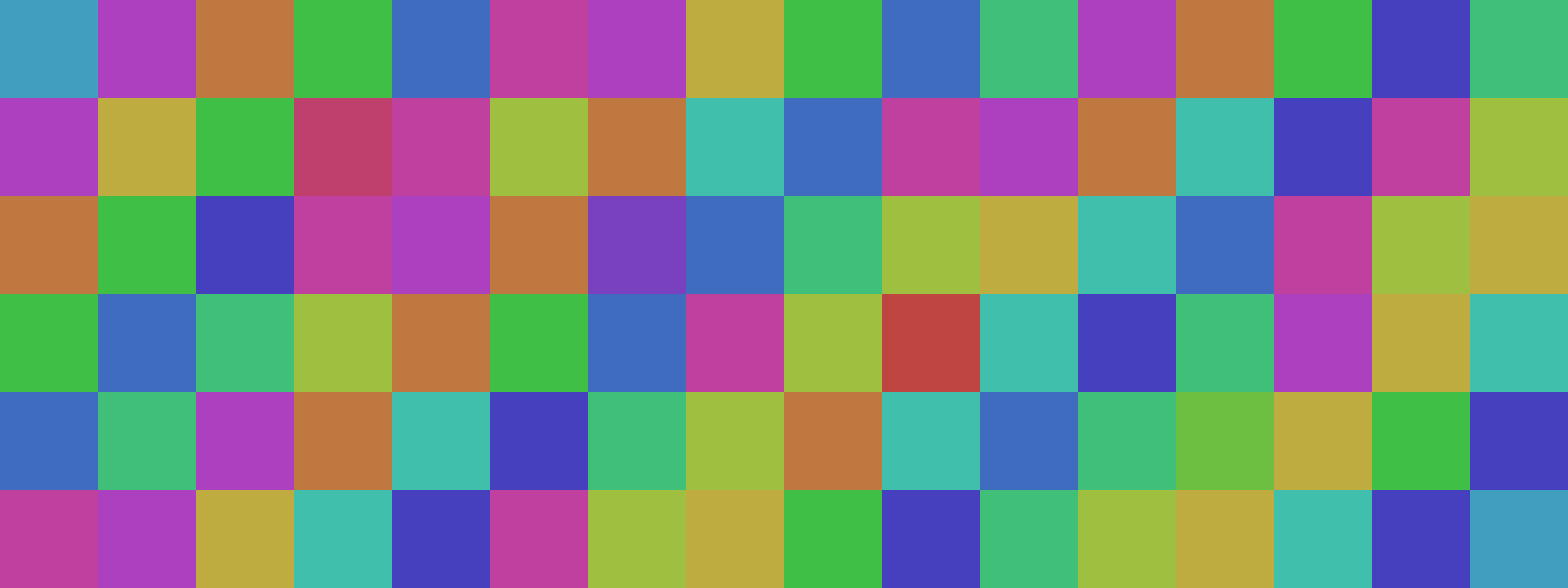
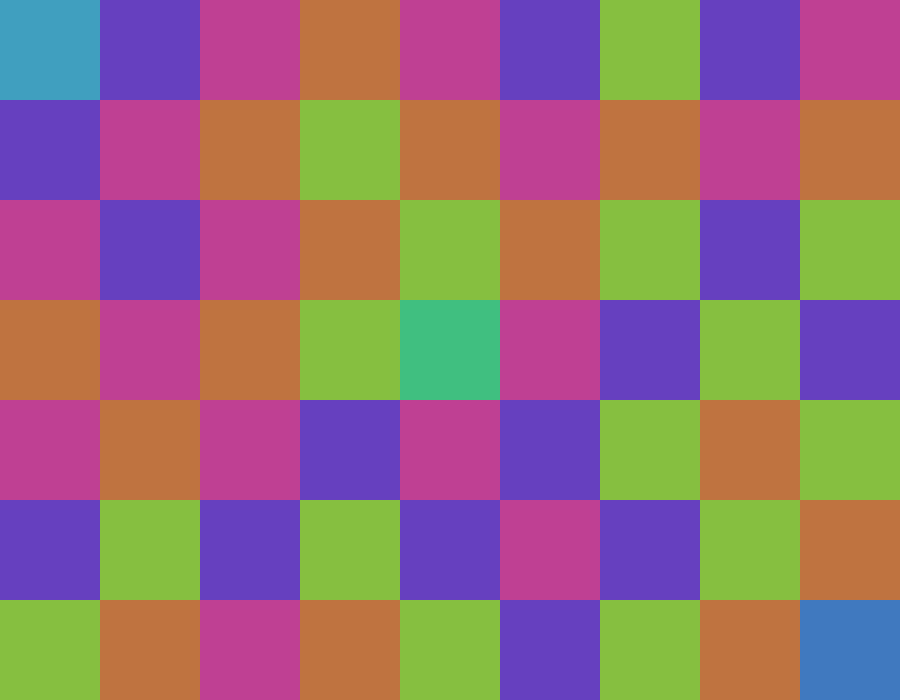
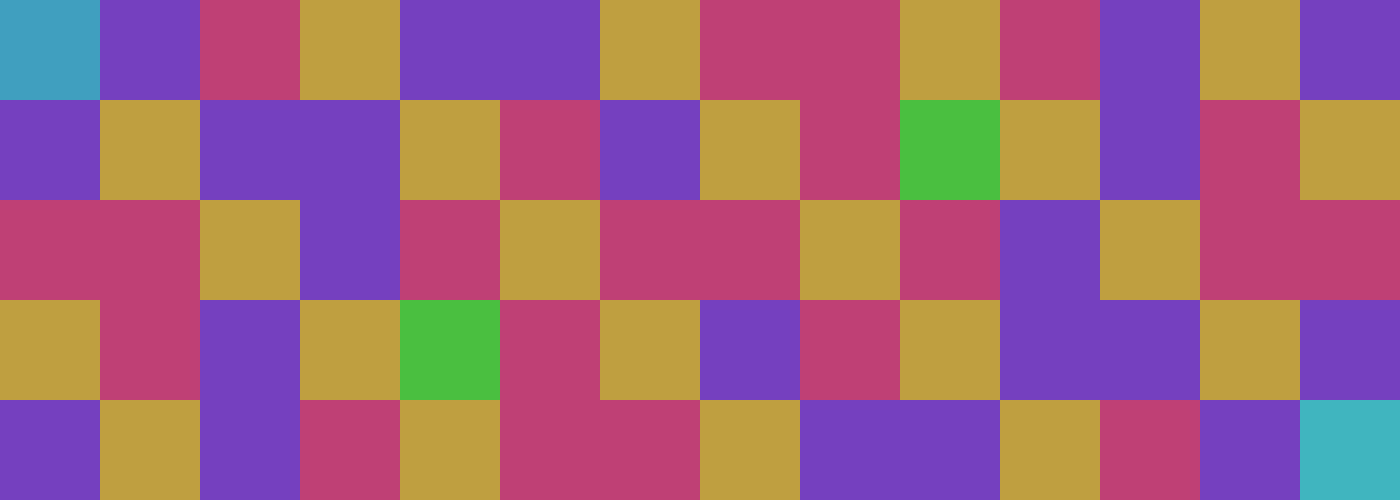




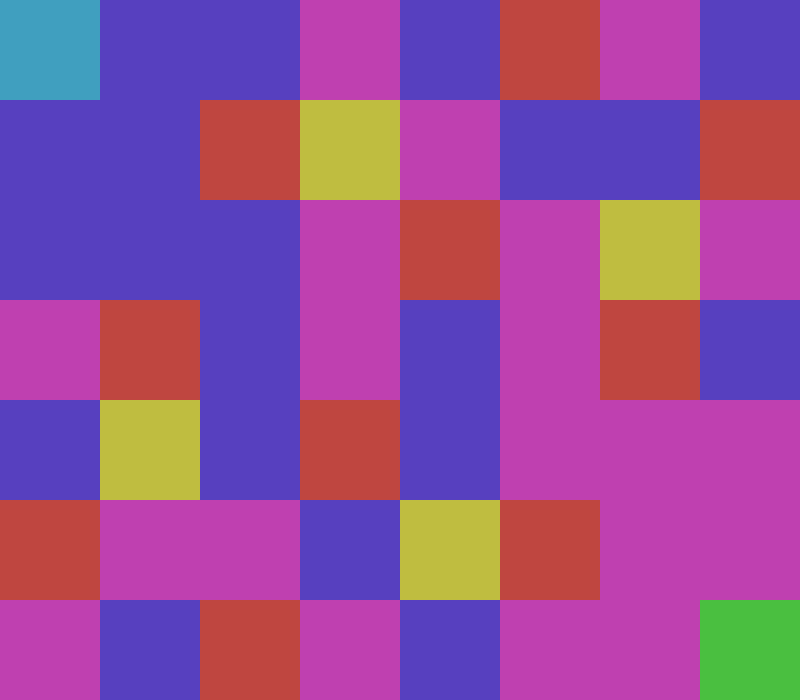


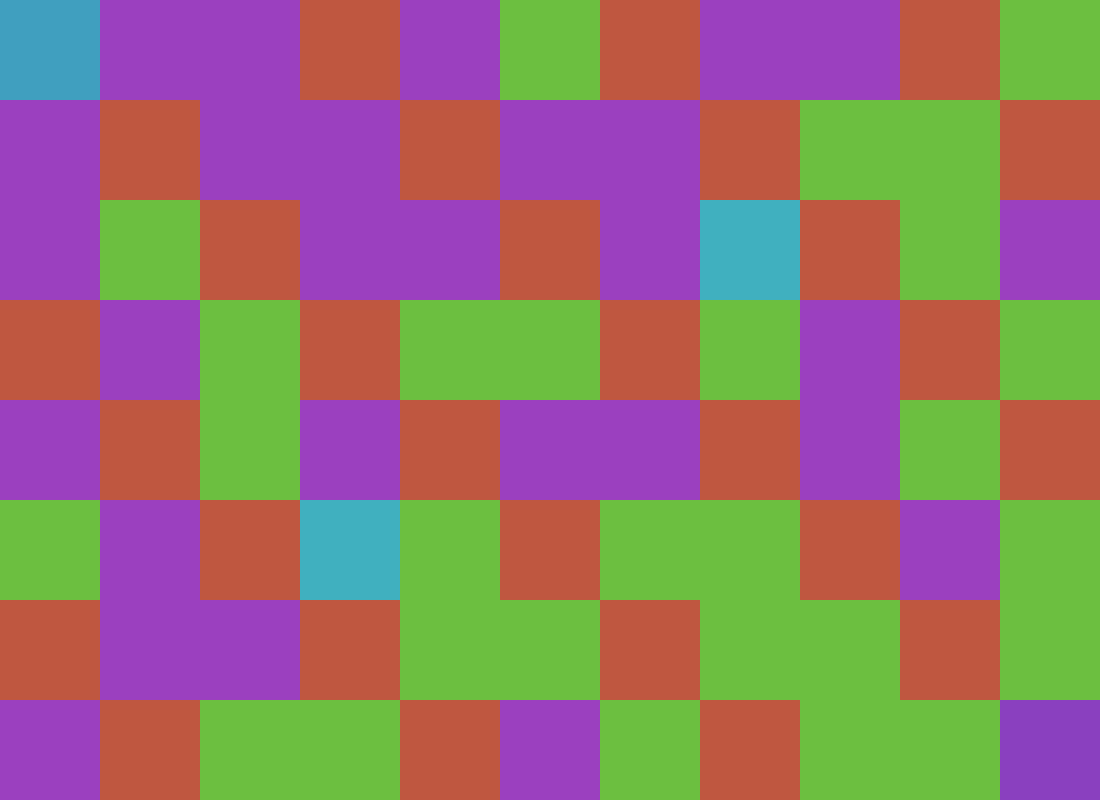


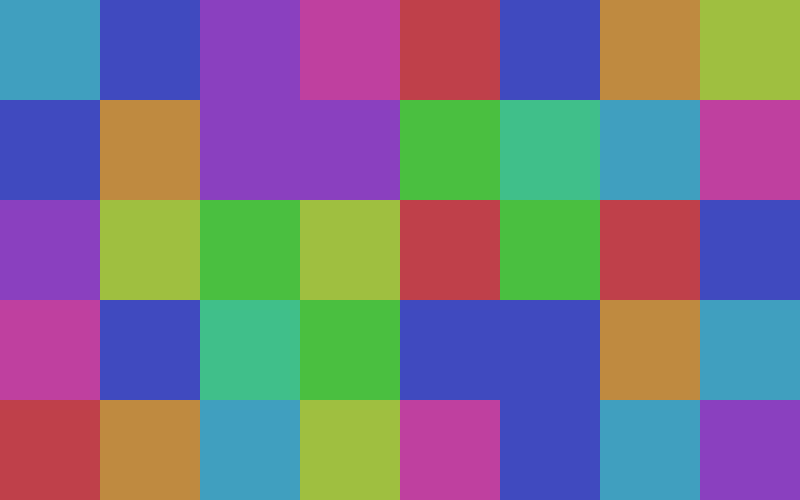













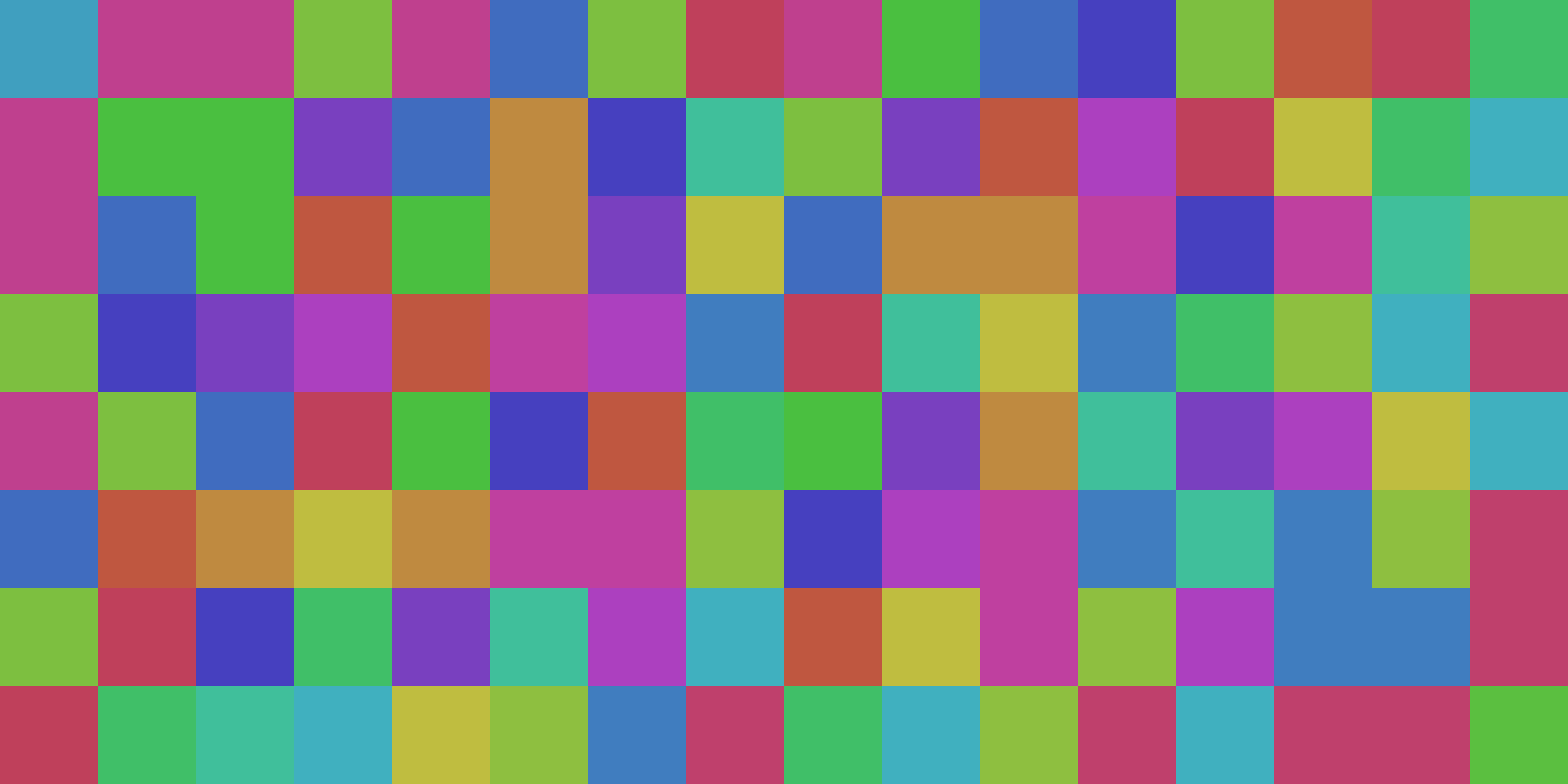


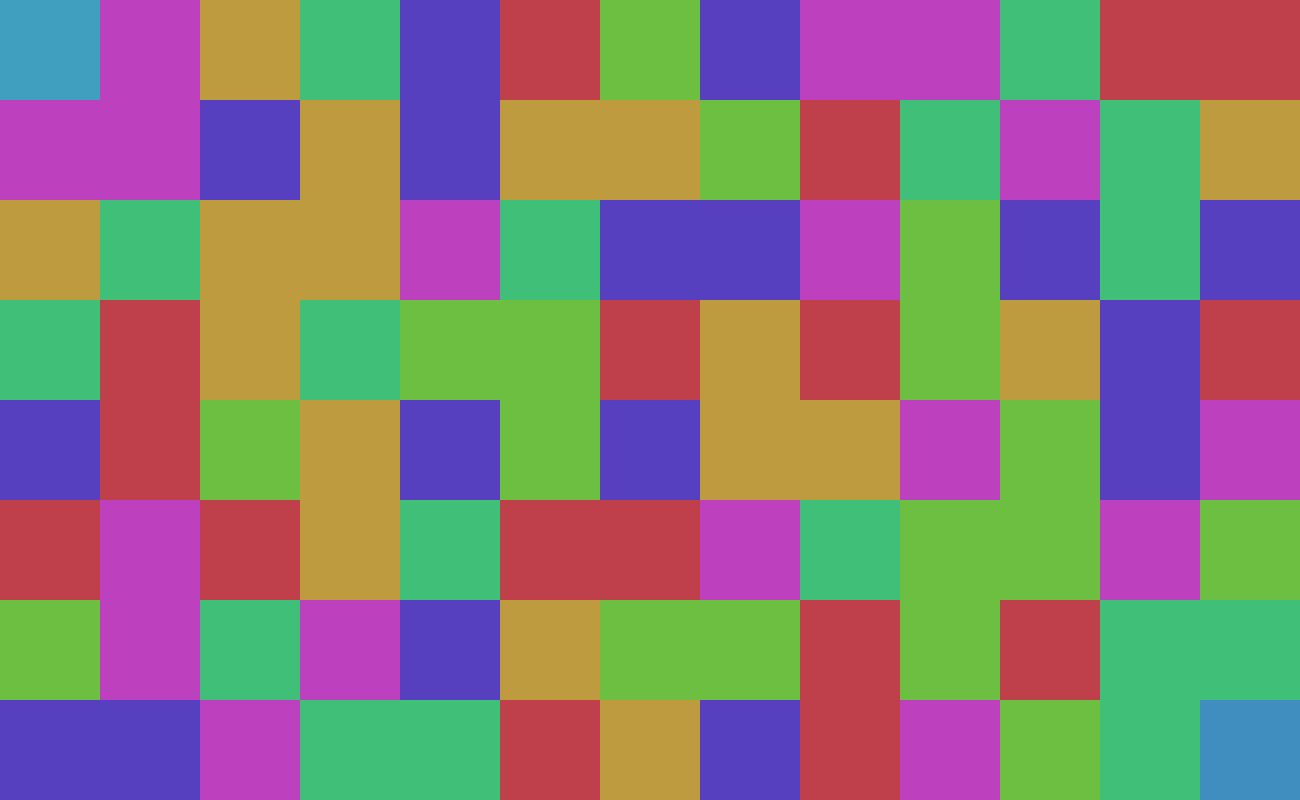
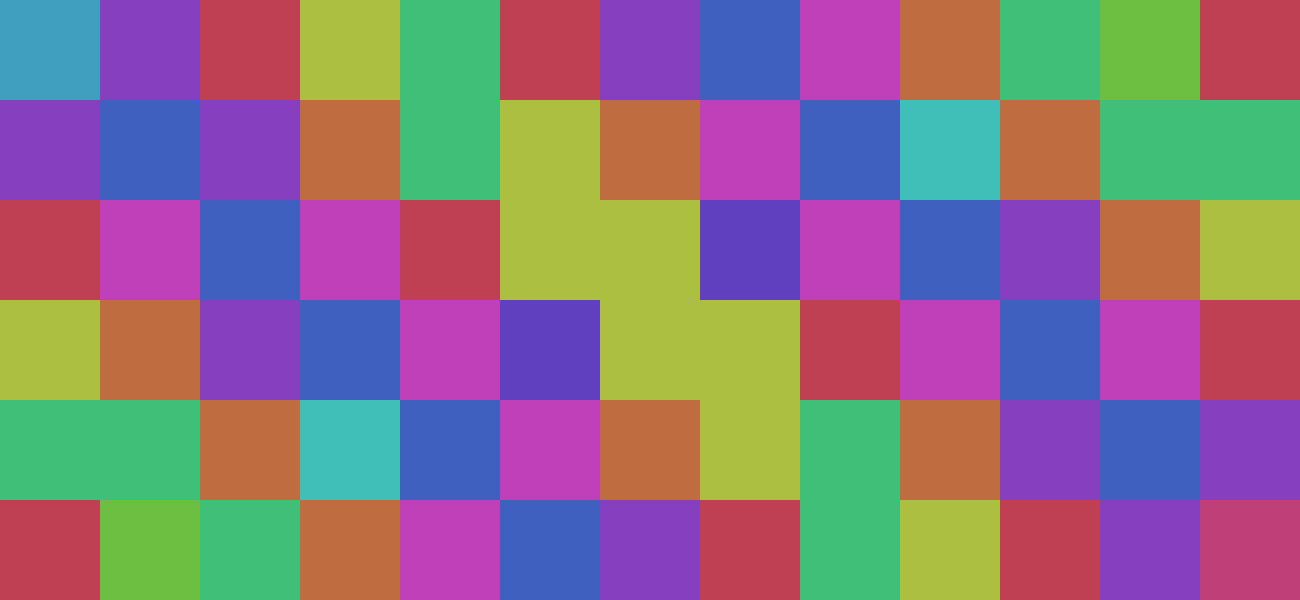


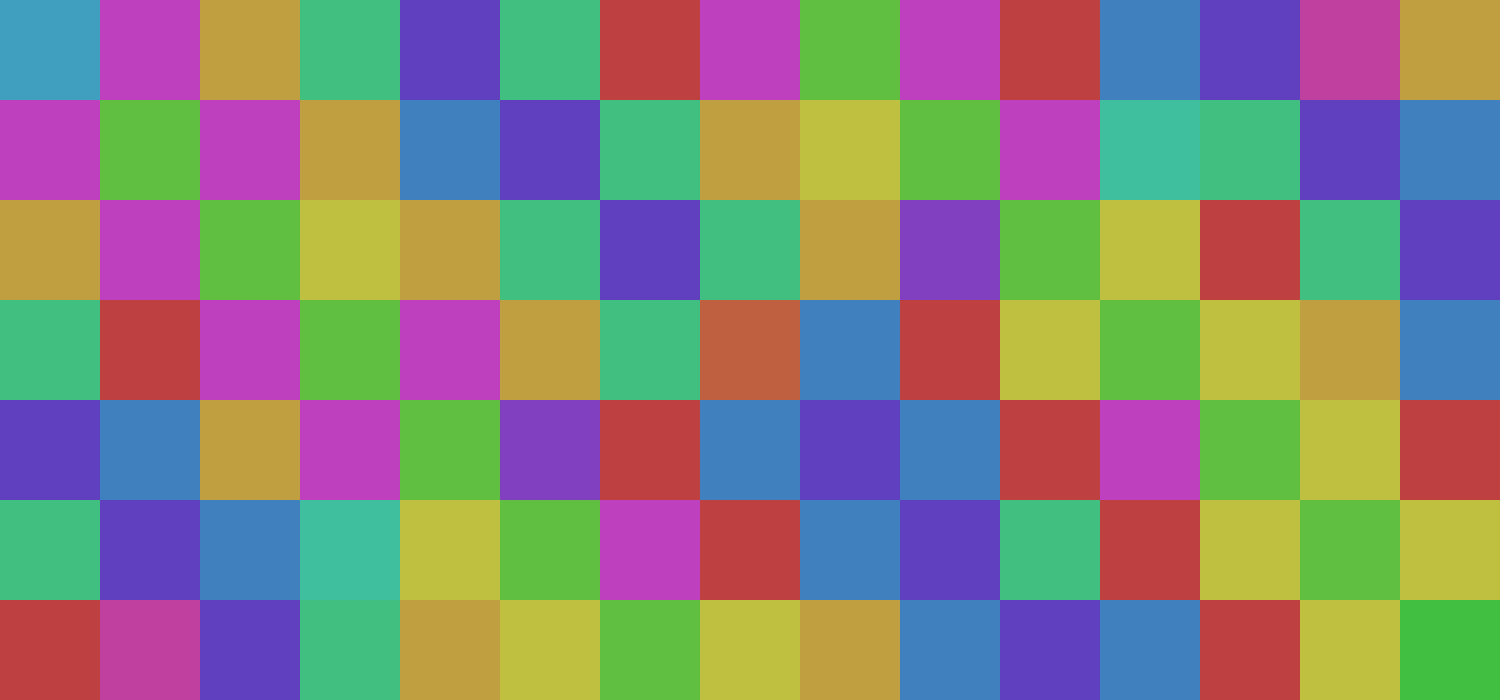
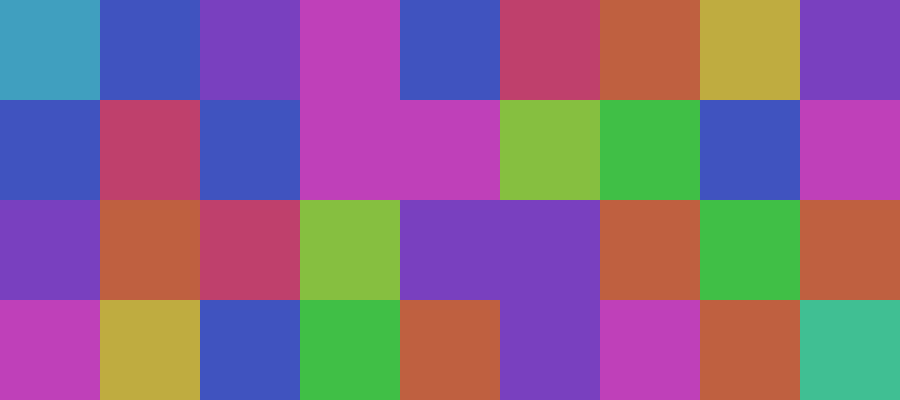

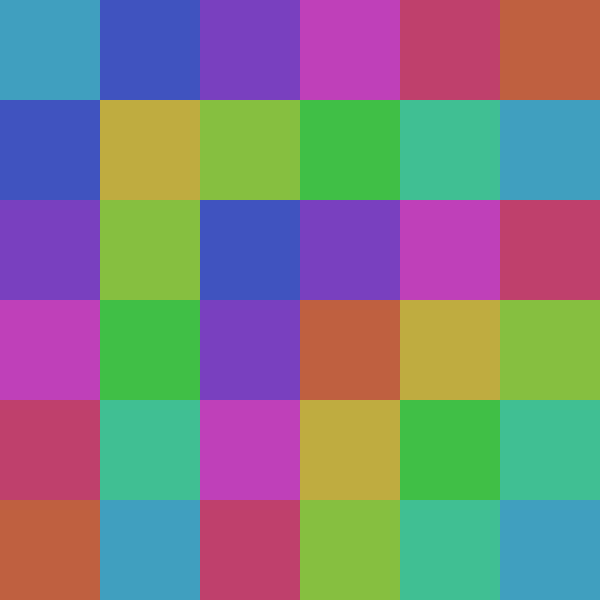

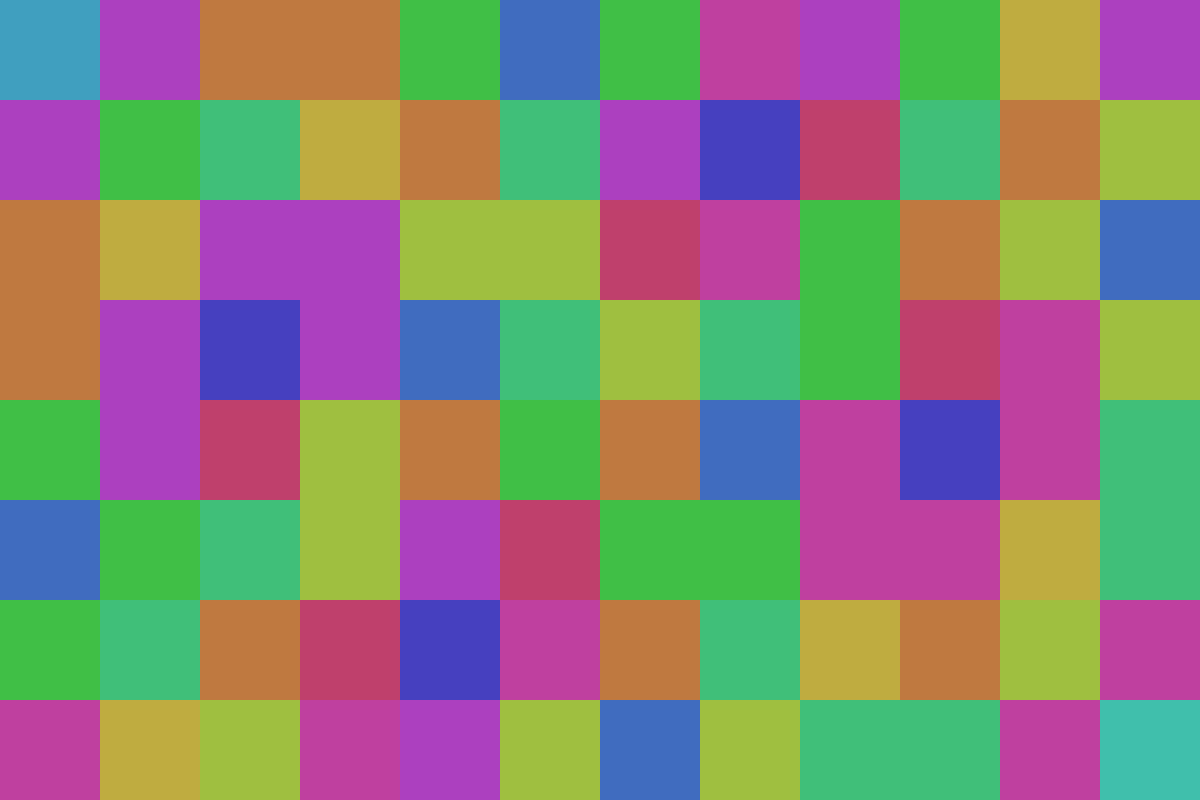
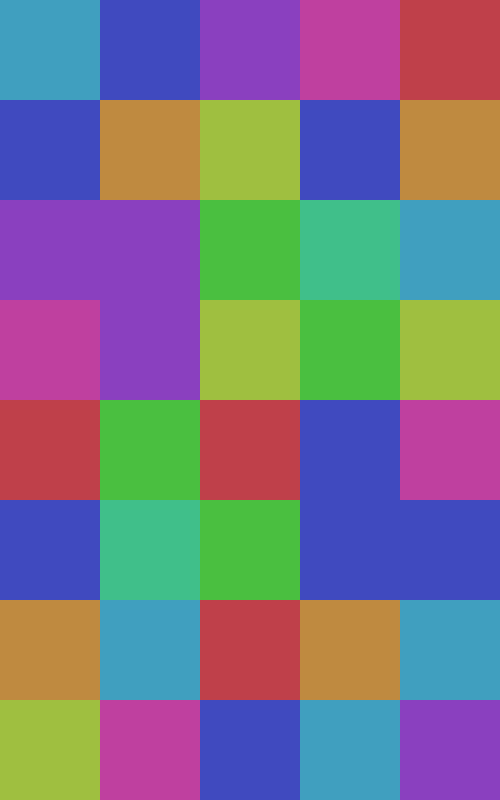


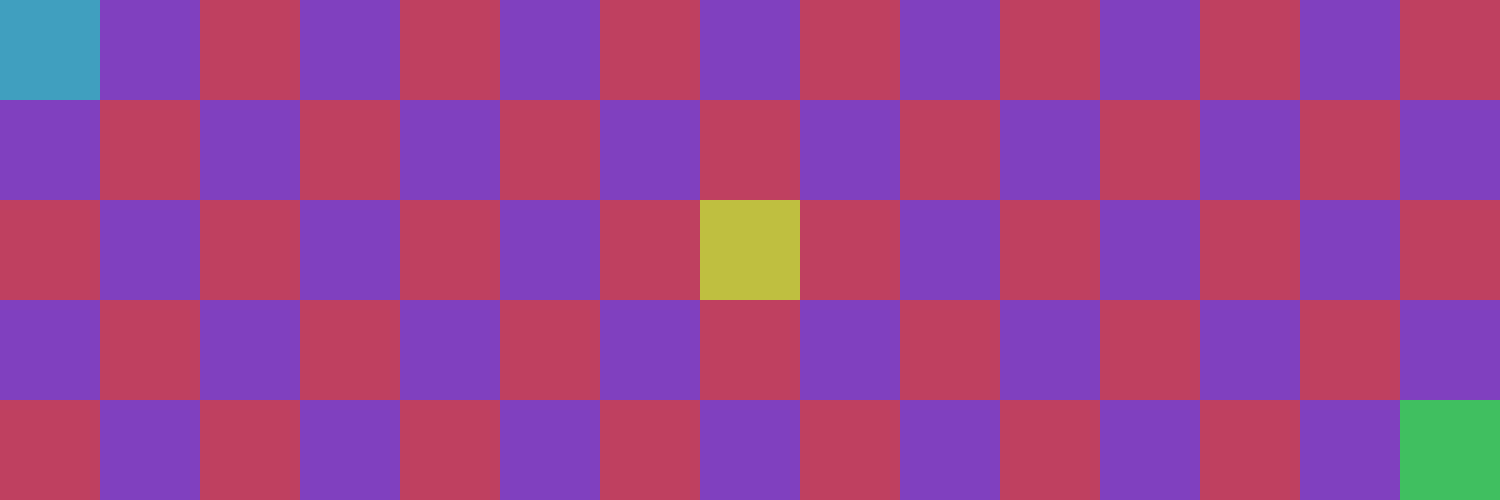



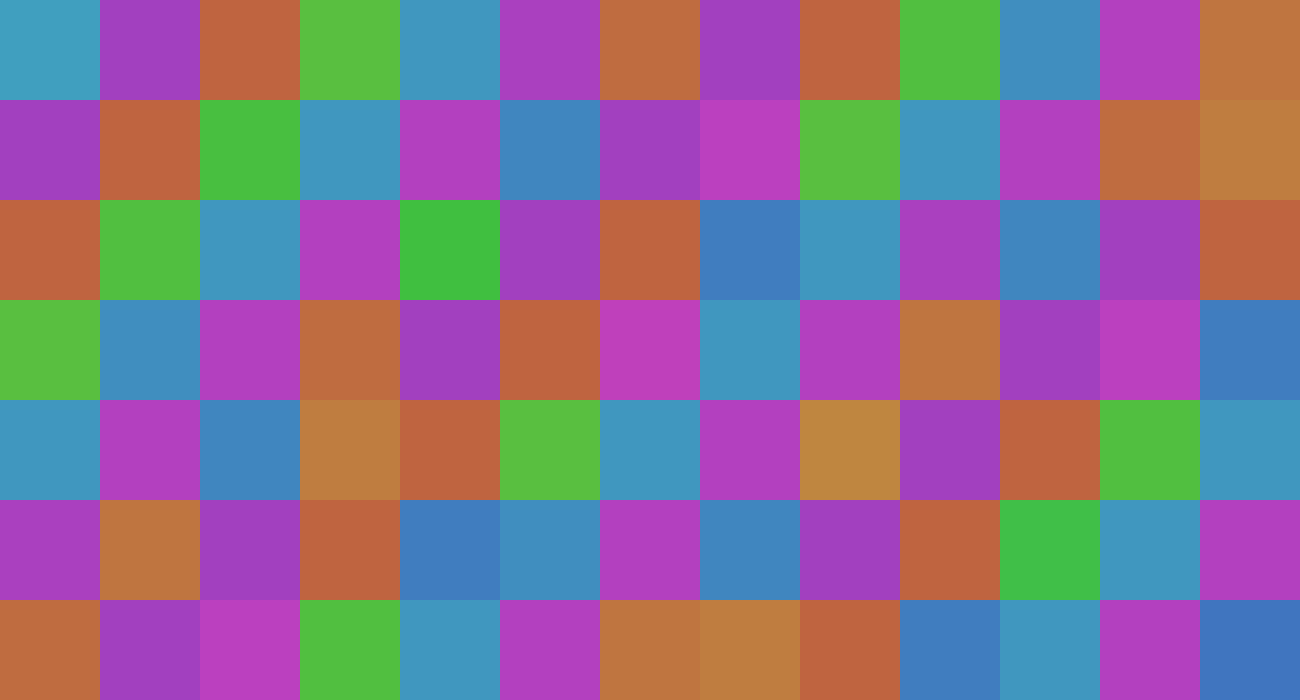







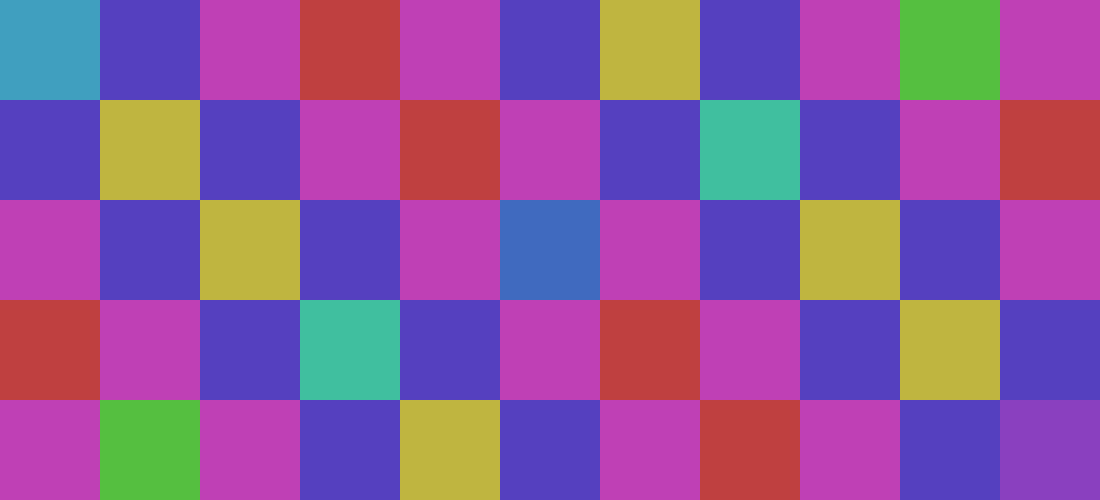

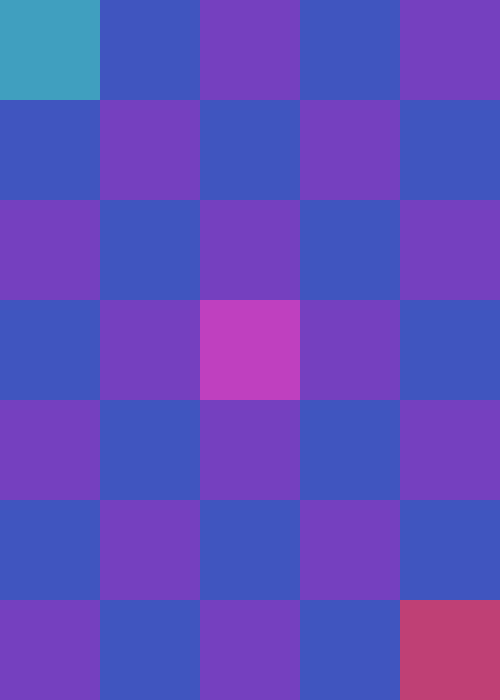



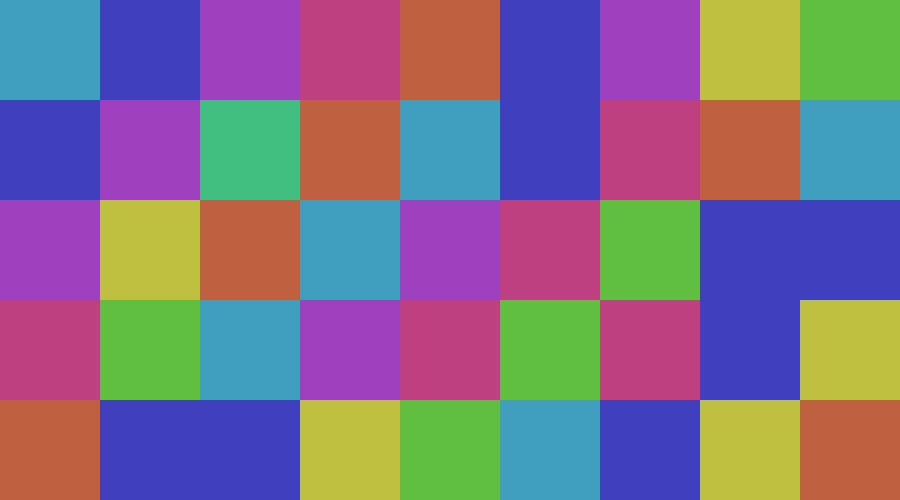


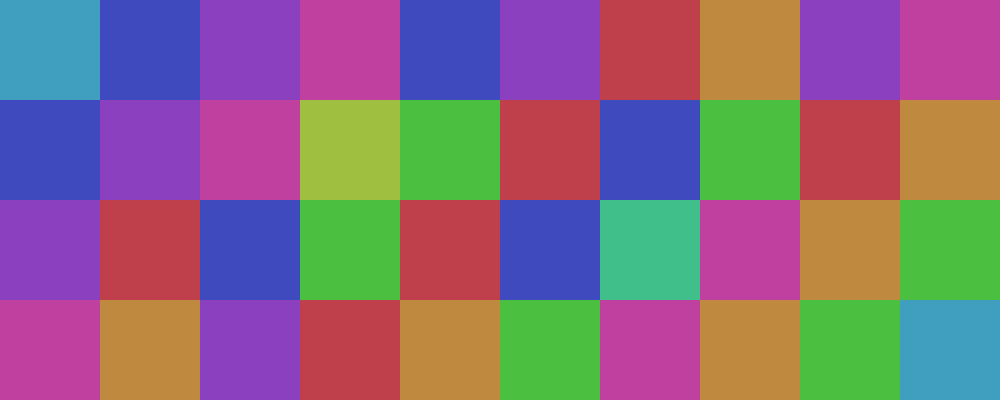


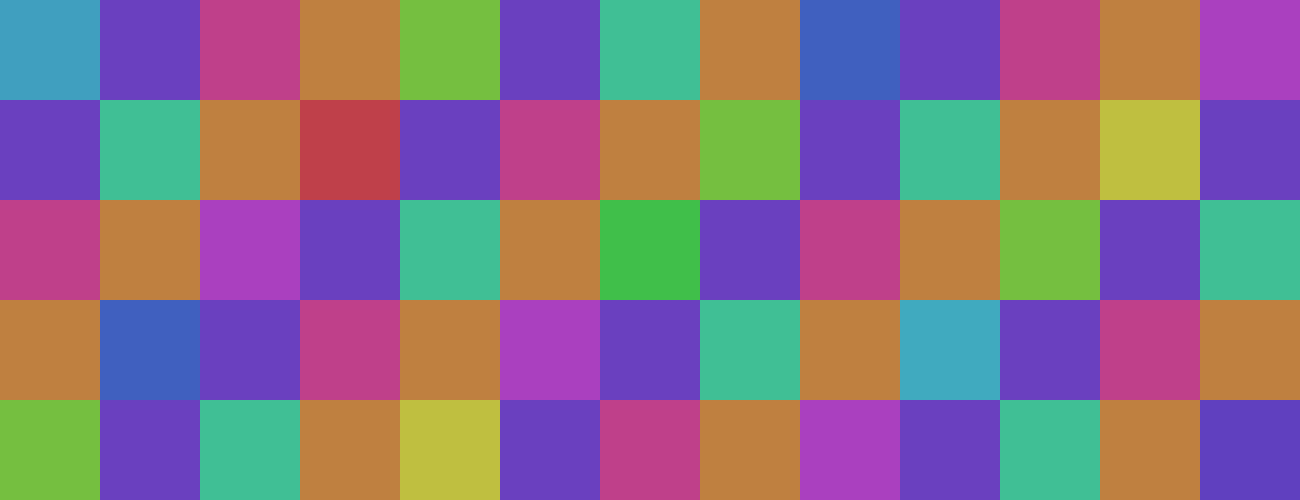


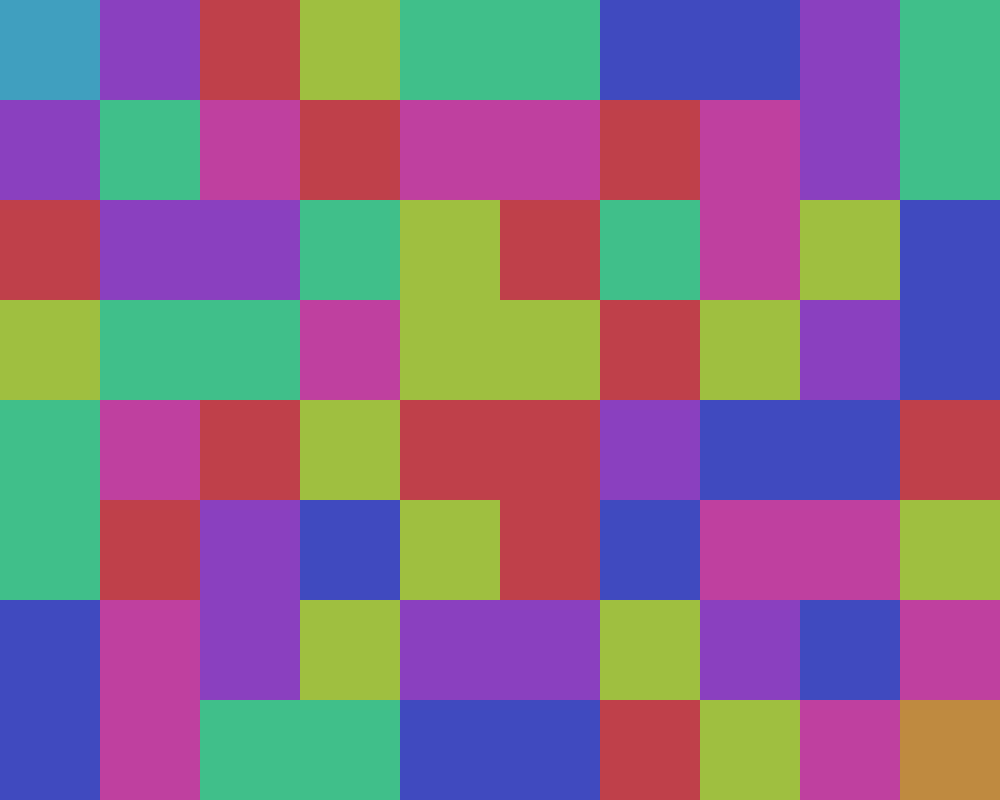



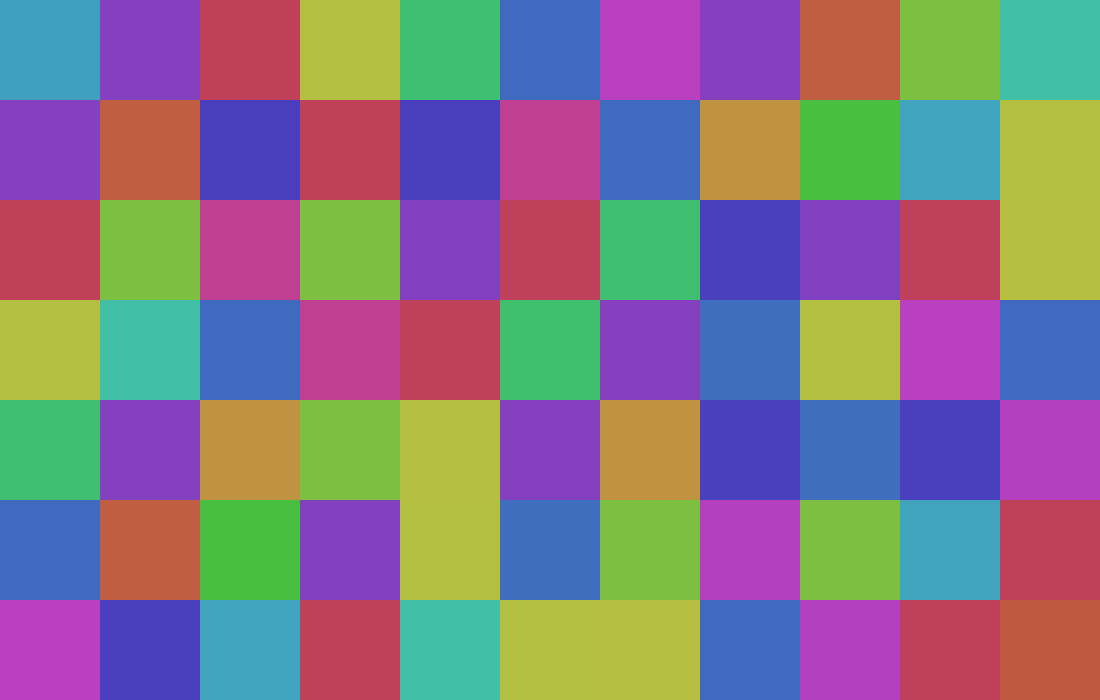





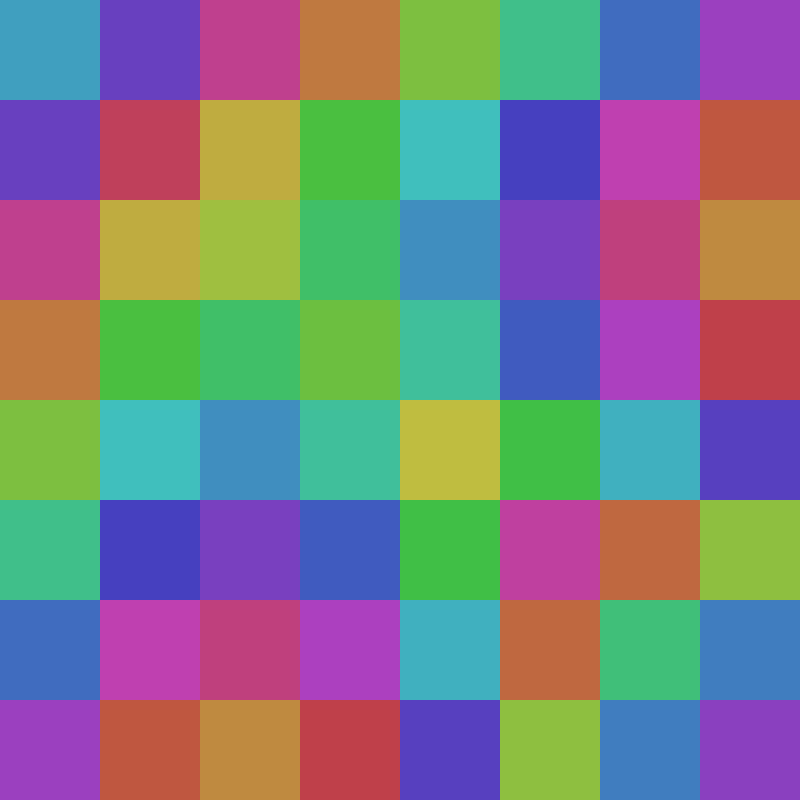
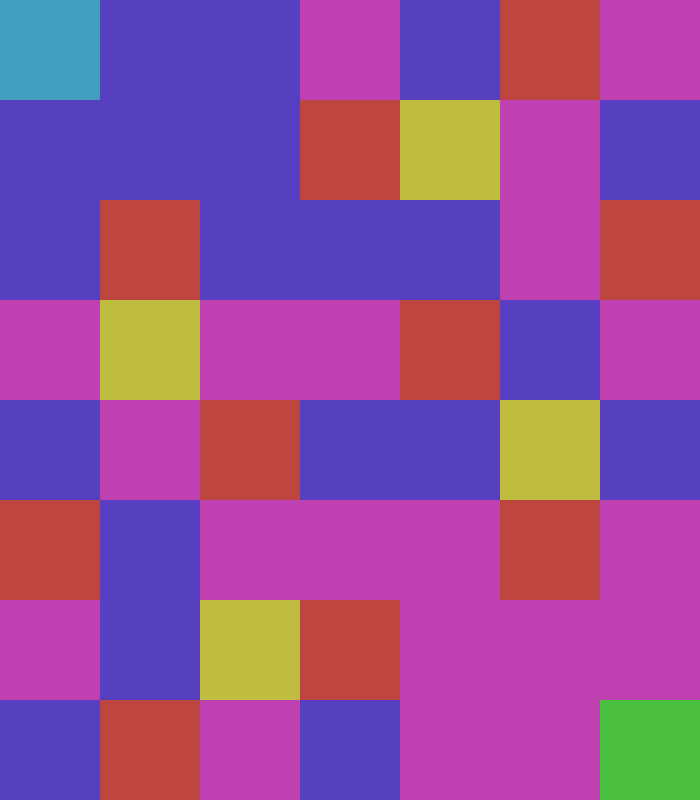





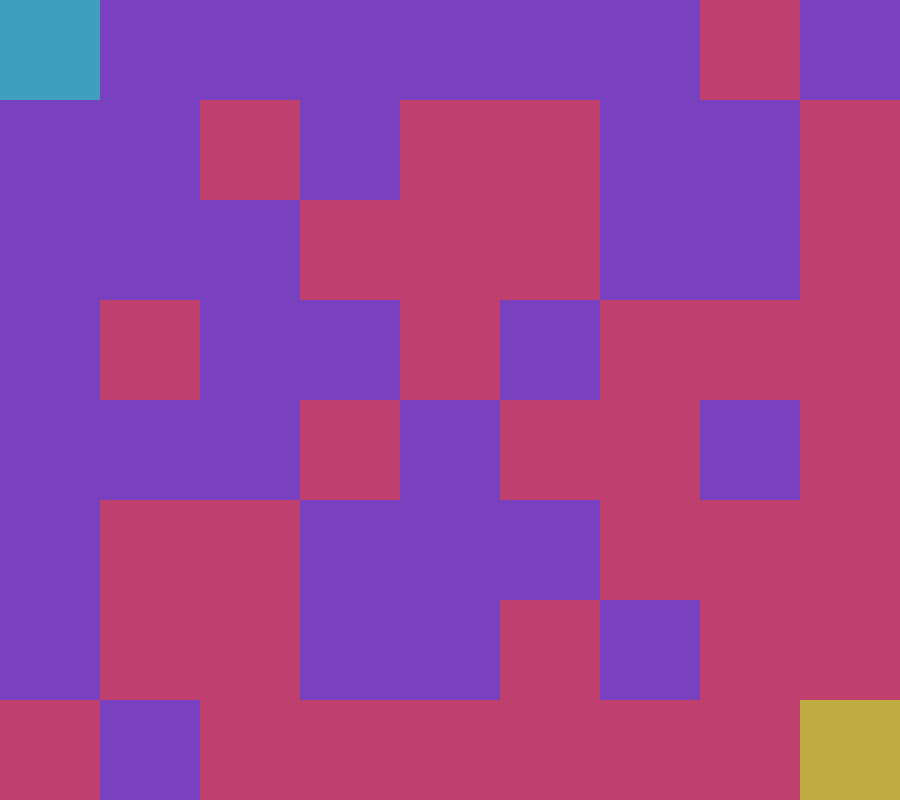

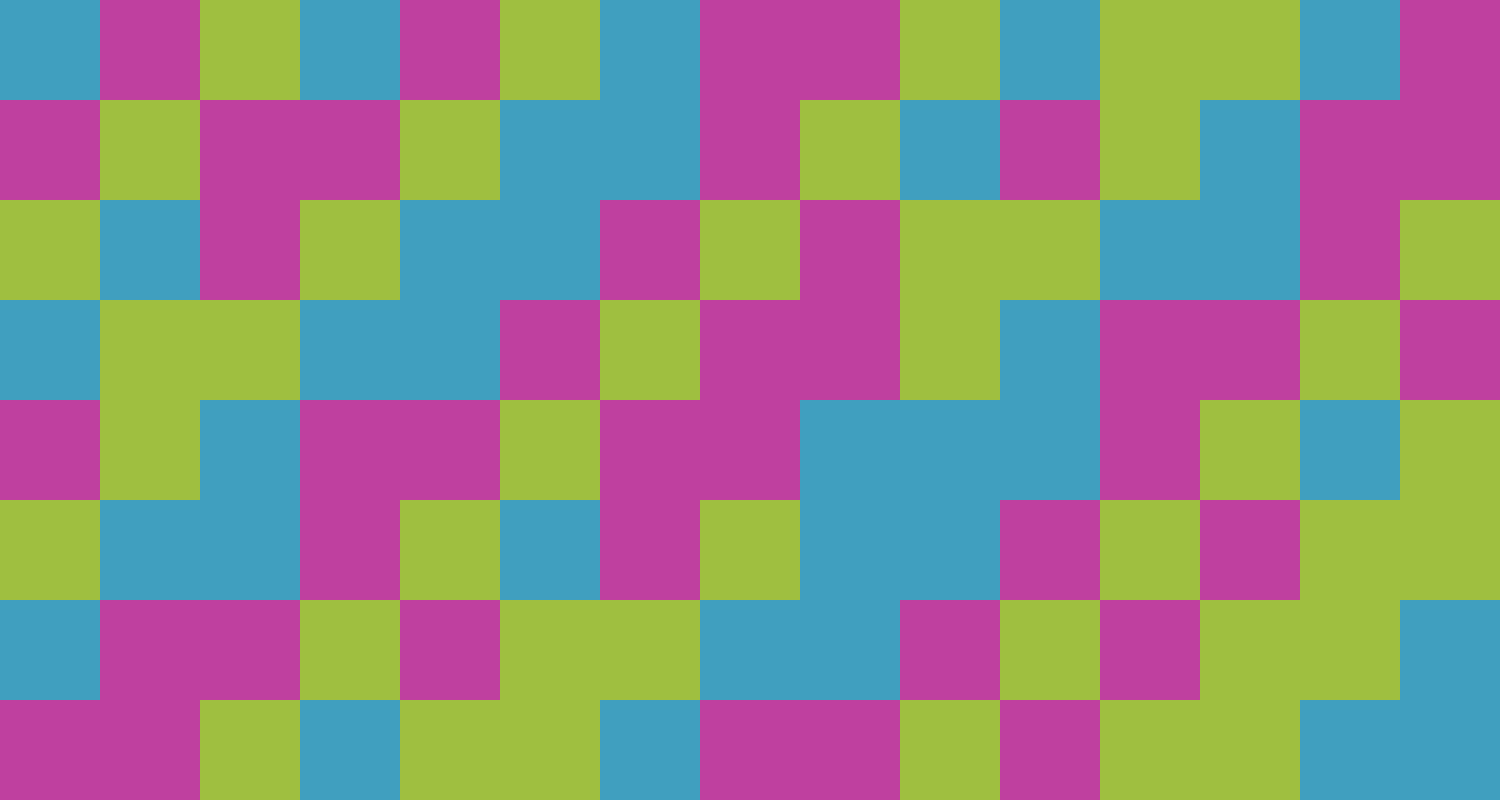

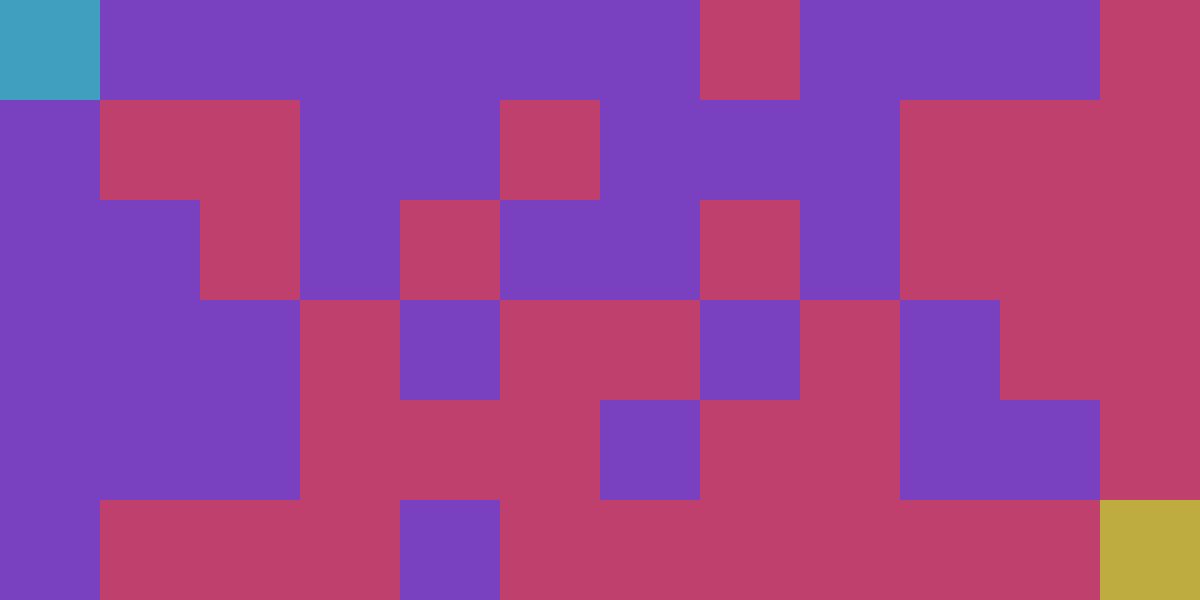
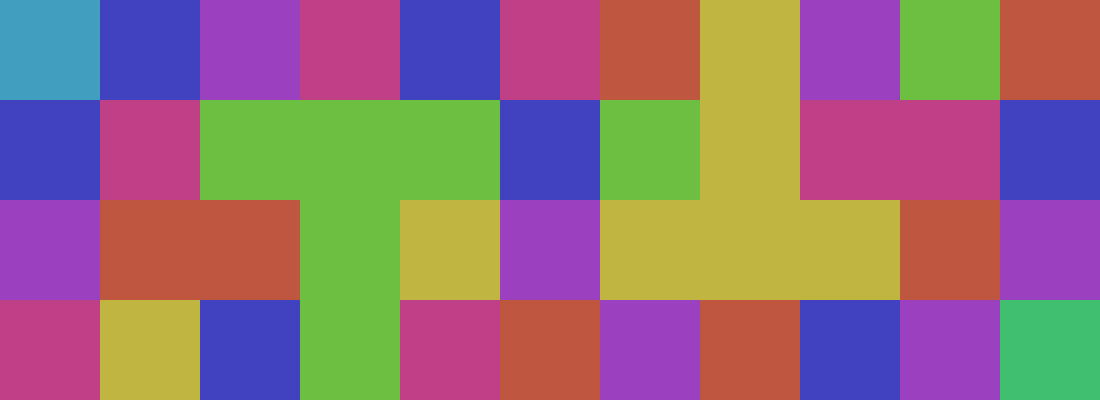





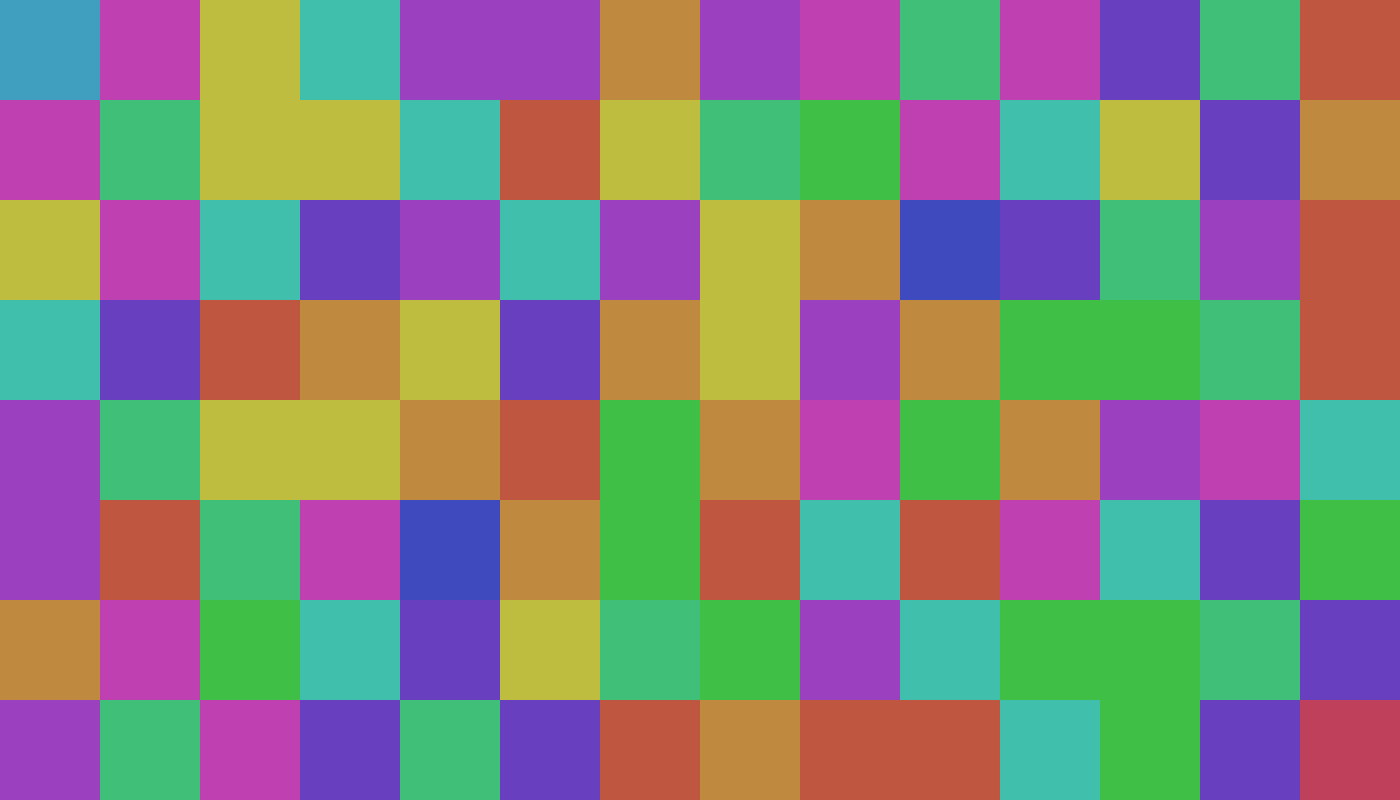










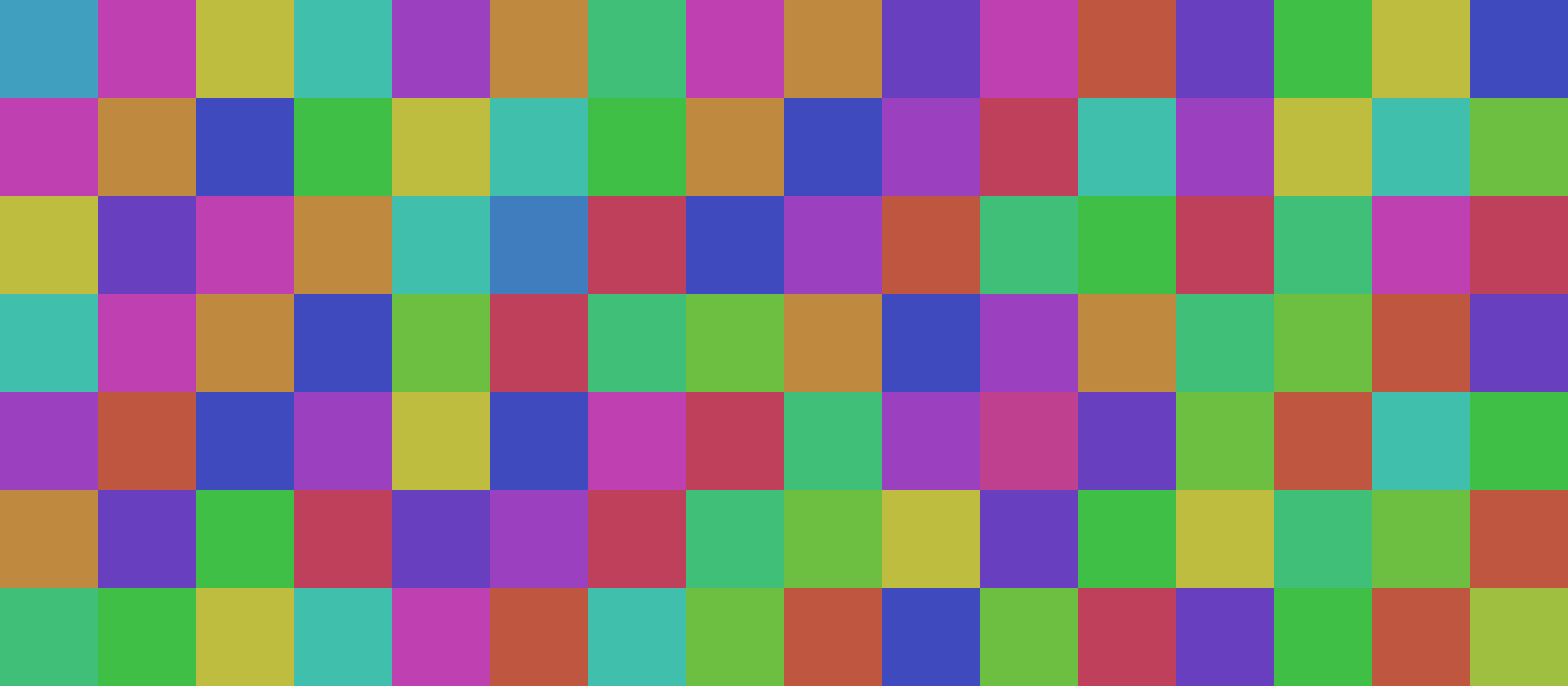

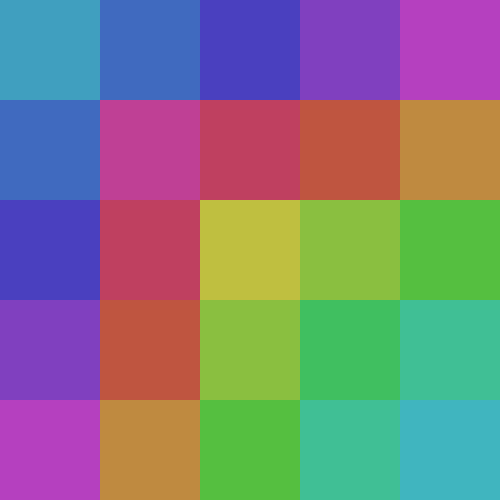
Above listed are all visualizations for , shuffled. Whilst some behave extremely regularly — for example square matrices’ transposition permutations decompose into transpositions —, others are wildly intricate. Each of them adheres to a rotational symmetry; the top left and bottom right are fixed points.
-=-
Number of cycles required
When looking at the generated images, one may notice how some dimensions require only a few cycles to span the entire permutation. For studying the number of required cycles — notationally —, the following table is computed:
h\w | 1 2 3 4 5 6 7 8 9 10 11 12 13 14 15 16 --------------------------------------------------------------------------------------------------- 1 | 1 2 3 4 5 6 7 8 9 10 11 12 13 14 15 16 2 | 2 3 3 4 4 3 3 6 4 3 7 4 4 5 3 8 3 | 3 3 6 4 5 3 8 4 11 3 10 6 5 7 10 4 4 | 4 4 4 10 4 4 8 8 10 10 8 4 16 10 4 24 5 | 5 4 5 4 15 4 5 12 13 4 9 4 13 6 5 4 6 | 6 3 3 4 4 21 3 4 4 3 11 4 12 3 3 16 7 | 7 3 8 8 5 3 28 6 7 7 22 4 21 3 14 16 8 | 8 6 4 8 12 4 6 36 4 8 6 12 8 12 22 20
is symmetric in its arguments. In the case of square dimensions
one immediately sees
and the largest non-square-dimensional value of in the above table is
with accompanying visulization pngs/h004-w016.png.
Implementation
Computation of the permutations, -table and creation of source
.ppm files is implemented in C++. Targeting the web necessitates usage of another image file format, thus zsh glue together with ImageMagick is used for .png conversion.
Source files: visualizing-cycles-in-row-major-transposition-encodings.cpp, visualizing-cycles-in-row-major-transposition-encodings.zsh